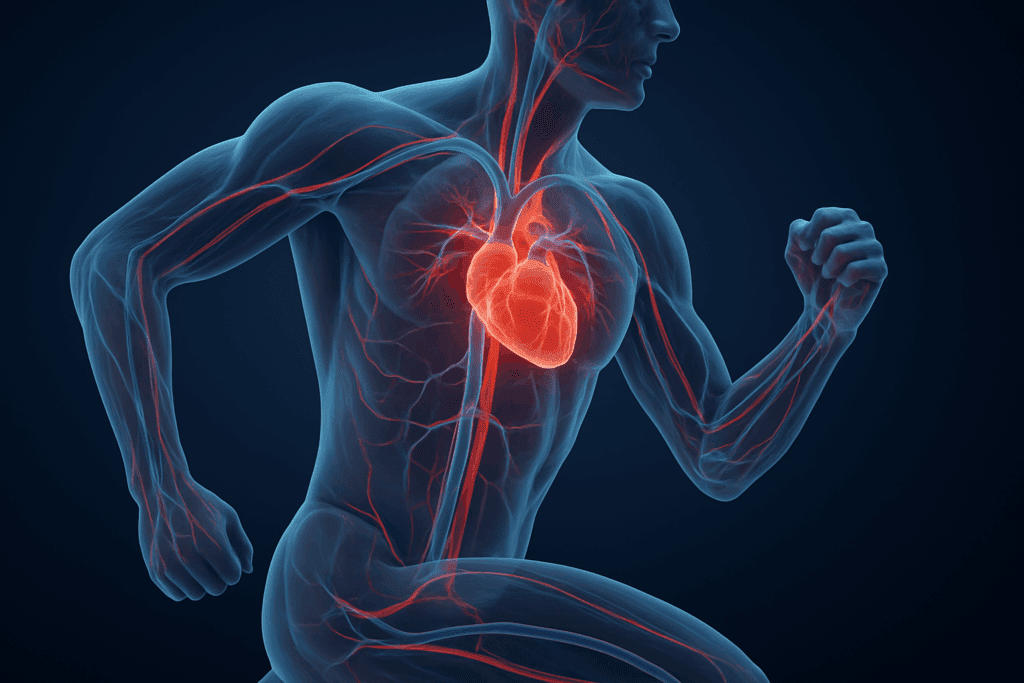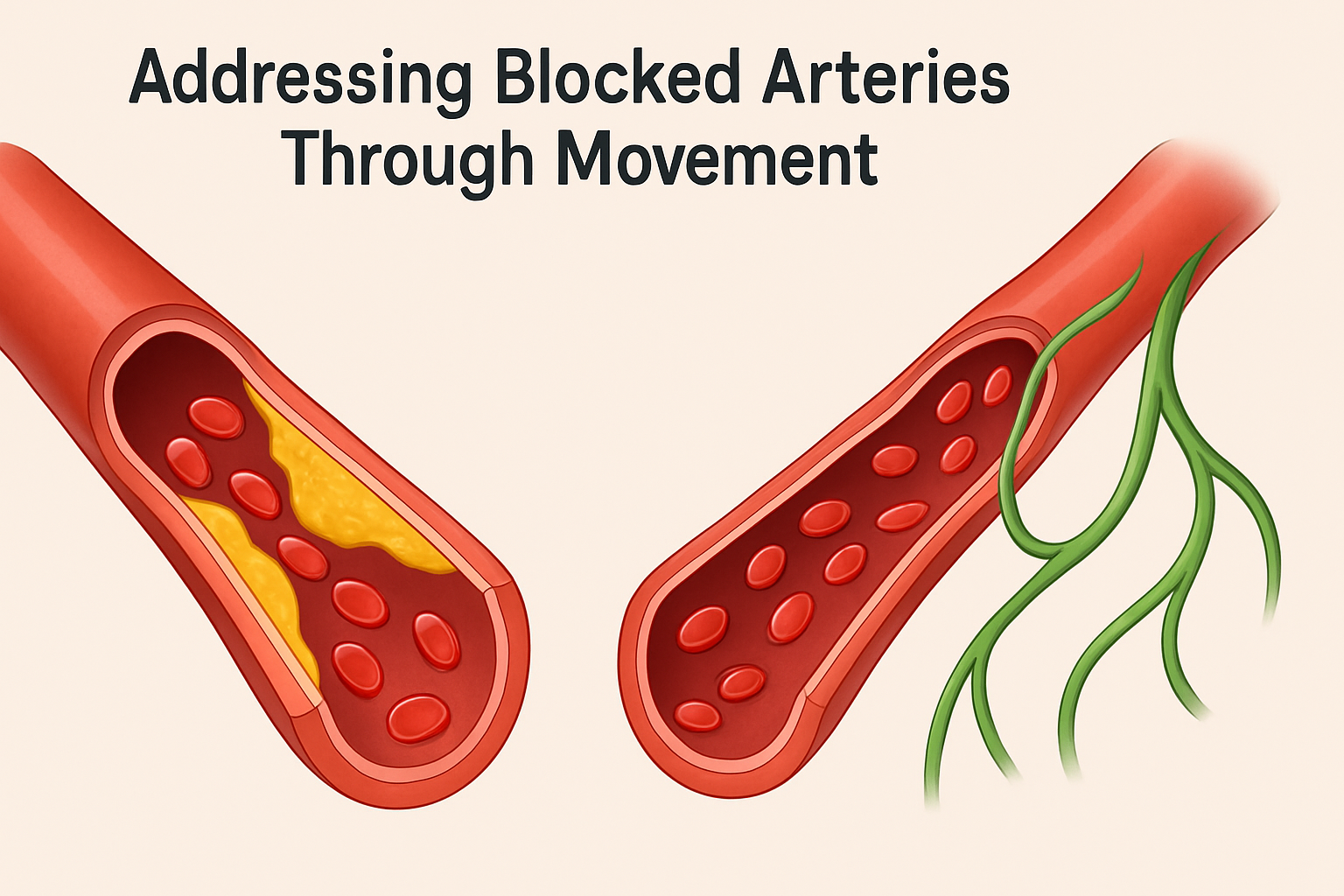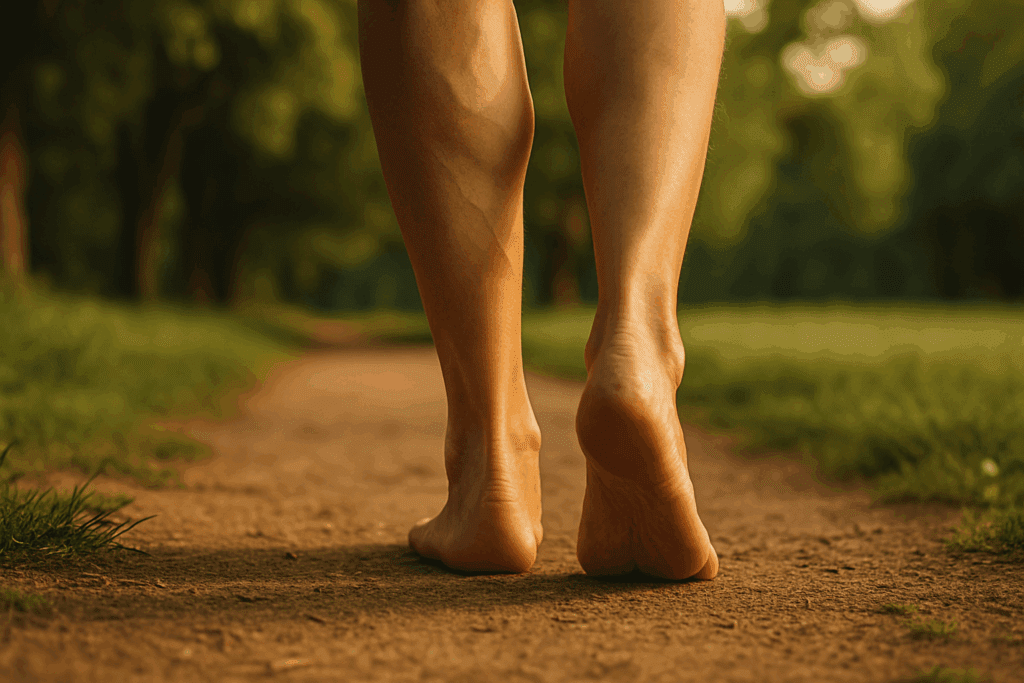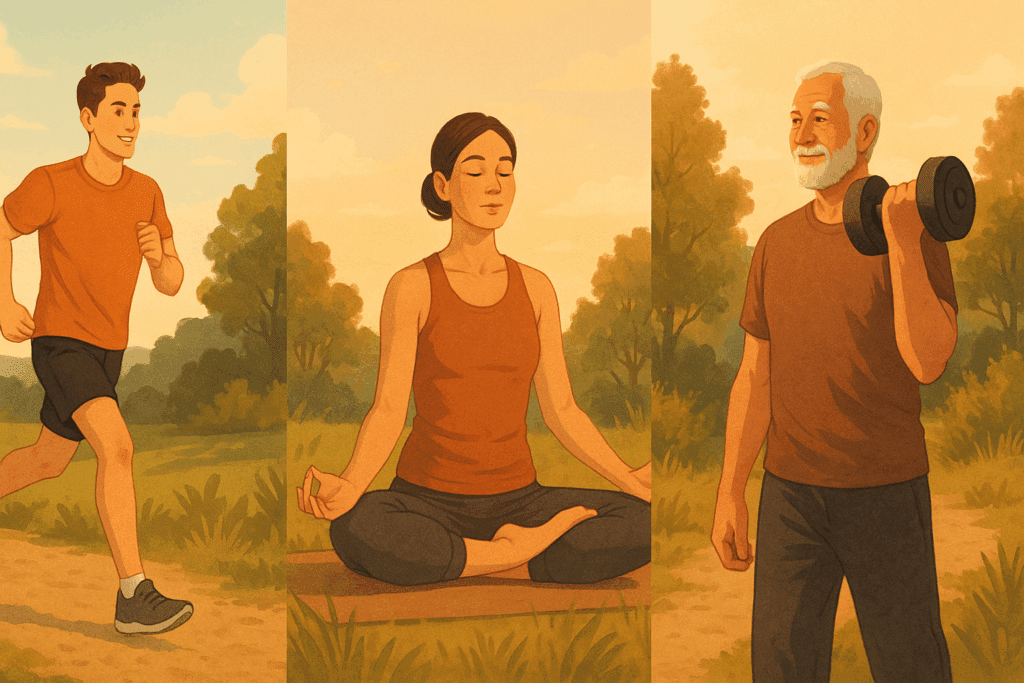Understanding the powerful link between movement and circulation is essential not only for fitness enthusiasts but for anyone seeking to improve overall health. Blood circulation plays a vital role in delivering oxygen and nutrients throughout the body, supporting everything from muscle function to brain performance. When circulation falters, energy levels decline, healing slows, and the risk of chronic conditions rises. This makes the role of exercise in promoting healthy blood flow not just a performance concern, but a cornerstone of disease prevention and longevity.
Recent research underscores the profound impact physical activity has on cardiovascular function. Whether you’re looking to boost endurance, reduce your risk of heart disease, or simply feel more energized throughout the day, consistent exercise can serve as a powerful catalyst. More than a tool for fitness, exercise and blood circulation are closely linked in a biological symphony that supports long-term wellness. But how exactly does exercise help blood circulation? And which forms of movement are most effective at addressing issues such as sluggish blood flow or even blocked arteries? Let’s dive deeper into the science, strategies, and applications that make exercise a key to vibrant health.
You may also like: Smart Nutrition Choices for a Healthier Lifestyle: What to Know About Whole Grain Rice and Whole Wheat Rice

The Physiology Behind Circulation and Exercise
To grasp how exercise improves blood flow, it helps to first understand what circulation entails. The circulatory system, composed of the heart, arteries, veins, and capillaries, functions as the body’s internal transport network. Blood carries oxygen from the lungs, nutrients from the digestive tract, and hormones from endocrine glands to tissues throughout the body. At the same time, it removes waste products like carbon dioxide and metabolic byproducts. Efficient circulation is crucial for regulating temperature, supporting immune responses, and maintaining organ function.
When you engage in physical activity, your muscles require more oxygen to sustain movement. This demand triggers a cascade of physiological responses. The heart begins to beat faster and with greater force, increasing cardiac output. Blood vessels dilate in active muscles, allowing for greater blood flow, while less essential areas receive temporarily reduced circulation. This adaptive mechanism, called blood flow redistribution, enhances performance and supports efficient use of the body’s energy resources.
Over time, regular aerobic activity leads to structural and functional adaptations in the cardiovascular system. These include improved endothelial function (which supports vessel dilation), increased capillary density in muscles, and a more robust heart capable of pumping blood more effectively. These adaptations explain why consistent training leads to lasting improvements in endurance, stamina, and cardiovascular resilience. Thus, not only does exercise help circulation in the short term, but it also rewires the system for better long-term performance.

Aerobic Exercise and Its Effects on Blood Flow
Among the many forms of movement, aerobic exercise is particularly effective in enhancing circulation. Activities such as walking, jogging, swimming, and cycling elevate the heart rate over extended periods, training the body to pump blood more efficiently. Clinical studies consistently show that aerobic training improves vascular function by promoting nitric oxide production, a molecule that helps blood vessels relax and expand. This process not only facilitates smoother blood flow but also reduces blood pressure, easing the burden on the heart.
One of the most compelling findings in exercise science is the role of aerobic activity in promoting arterial flexibility. Stiff arteries hinder blood flow and elevate cardiovascular risk. Fortunately, aerobic exercise combats this by reducing inflammation and oxidative stress in the arterial walls. In this way, exercises to improve circulation are not merely preventive but also corrective, helping to reverse early-stage vascular dysfunction.
Additionally, aerobic workouts encourage the development of collateral blood vessels—small vessels that act as alternative pathways for blood to bypass obstructions. This process, known as angiogenesis, is particularly important for individuals with compromised blood flow due to partial arterial blockages. By improving circulation routes, aerobic exercise enhances the delivery of oxygen to tissues even in the presence of arterial narrowing. This is one reason why the question, “does exercise improve blood flow?” continues to garner a resounding yes from cardiovascular researchers.

Resistance Training and Vascular Adaptation
While aerobic activity takes center stage in discussions of cardiovascular health, resistance training also plays a valuable role. Strength-based exercises, including weight lifting, resistance band work, or bodyweight movements, elicit brief but intense increases in blood pressure and vascular resistance. Over time, the body adapts to these stressors by strengthening the blood vessel walls and enhancing overall vascular tone.
What makes resistance training particularly beneficial is its impact on muscular demand. As muscles grow stronger, they require a more substantial blood supply. This encourages the body to expand its capillary network and refine its blood distribution systems. As a result, resistance training enhances local circulation to working muscles, supporting better nutrient delivery and waste removal. These changes contribute to recovery, reduce muscle soreness, and optimize performance.
In older adults, who are particularly susceptible to circulatory decline, resistance training can be especially transformative. Studies have shown that even modest strength training routines significantly improve arterial compliance, helping to counteract age-related vascular stiffness. For this population, resistance exercises to improve circulation can restore vitality and improve quality of life in ways that go beyond strength gains alone.

High-Intensity Interval Training: A Time-Efficient Circulatory Boost
High-intensity interval training (HIIT) has gained popularity for its efficiency and effectiveness, and its benefits extend to circulation as well. HIIT involves alternating short bursts of vigorous activity with periods of rest or low-intensity exercise. This format challenges the cardiovascular system, pushing the heart rate to high levels before allowing it to recover. The repeated fluctuations promote cardiovascular adaptability, leading to improved heart function and vascular responsiveness.
A key benefit of HIIT lies in its ability to induce substantial metabolic changes in a short time. The intense muscular contractions demand rapid oxygen delivery, prompting the body to enhance blood vessel dilation and capillary recruitment. As a result, HIIT not only improves overall cardiovascular fitness but also fosters better microcirculation in active tissues.
For individuals with time constraints or those seeking a powerful way to revitalize sluggish circulation, HIIT offers a compelling solution. Research has found that HIIT can rival or even surpass traditional endurance training in terms of its effects on endothelial function and arterial health. This makes it an appealing option in the repertoire of exercises to improve circulation, particularly for those aiming to maximize benefits in minimal time.

Addressing Blocked Arteries Through Movement
The notion that exercise might help clear or bypass blocked arteries is both hopeful and scientifically grounded. While it is inaccurate to claim that exercise physically removes plaque from arteries, there is strong evidence to support its role in improving circulation around blockages. When faced with narrowing arteries, the body can develop collateral vessels to reroute blood flow. The stimulus for this adaptation often comes from consistent physical exertion.
So, what exercise is good for blocked arteries? Aerobic activities remain the gold standard, especially walking, cycling, and swimming. These movements are low-impact, sustainable, and effective in gradually increasing cardiovascular workload. Over time, they promote angiogenesis and improve the efficiency of the vascular network. Resistance training and HIIT can complement aerobic work by improving muscular demand and systemic blood flow, but they should be introduced cautiously in individuals with known cardiovascular disease.
Importantly, exercise also modifies the underlying risk factors that contribute to arterial blockage. Regular physical activity improves lipid profiles, lowers blood pressure, reduces inflammation, and enhances glucose metabolism. These changes slow the progression of atherosclerosis and improve endothelial health. Thus, while exercise does not literally unclog arteries, it provides a multifaceted approach to preserving and enhancing blood flow. The question, “does exercise unclog arteries?” may require nuance, but the practical outcome is an improvement in circulatory function and reduced cardiovascular risk.

Enhancing Microcirculation and Peripheral Blood Flow
Beyond the major arteries and veins, the circulatory system includes an intricate network of capillaries responsible for microcirculation. This level of circulation is vital for supplying oxygen to skin, muscles, nerves, and internal organs. Impaired microcirculation can contribute to cold extremities, slow healing, numbness, and even chronic fatigue. Fortunately, exercise can stimulate and rehabilitate this aspect of vascular health.
Activities that involve rhythmic, repetitive muscle contractions are especially beneficial. Walking, for instance, activates the calf muscle pump, which propels blood upward from the lower legs, reducing pooling and promoting venous return. Yoga and tai chi, with their emphasis on controlled movement and breath, enhance both arterial and venous microcirculation by stimulating the autonomic nervous system and promoting relaxation.
The phrase “can exercise improve circulation” is particularly relevant when considering individuals with peripheral arterial disease (PAD) or diabetes, both of which impair microvascular function. Supervised walking programs and mild resistance training have demonstrated measurable improvements in walking distance and skin perfusion in such patients. These findings highlight how exercise and blood circulation are interconnected at even the smallest vascular levels, and why consistent movement is crucial for those managing chronic vascular conditions.

Exercise as a Long-Term Circulatory Strategy
One of the most compelling reasons to maintain an active lifestyle is the cumulative benefit it provides for the circulatory system. While a single workout can enhance blood flow temporarily, the real transformation happens over weeks, months, and years of consistent activity. Cardiac muscle becomes more efficient, resting heart rate declines, and the vascular system grows more responsive to demands. These changes are protective, reducing the risk of heart attack, stroke, and cognitive decline.
Moreover, exercise instills habits that support other circulation-friendly behaviors. Active individuals tend to eat more nutritious diets, manage stress more effectively, and sleep better—all of which further support vascular health. Thus, when answering the question “does exercise help blood circulation,” the broader context reveals that its influence extends far beyond the arteries. It touches every aspect of metabolic health and well-being.
Skeptics may ask, “will exercise improve circulation even if I start late in life?” The resounding answer is yes. Studies consistently show that older adults who initiate physical activity programs experience significant gains in vascular function, endurance, and quality of life. It is never too late to harness the benefits of movement. The vascular system remains adaptable across the lifespan, capable of regenerating and improving in response to the right stimuli.
Frequently Asked Questions: How Exercise Supports Circulation and Cardiovascular Health
1. Can exercise improve circulation in people with sedentary lifestyles or desk jobs?
Yes, even light forms of exercise can significantly improve circulation for individuals with sedentary routines. Prolonged sitting slows down blood flow, particularly to the lower extremities, which can contribute to poor vascular tone and even blood pooling. Introducing regular movement breaks throughout the day—such as short walks, stretching, or standing desk intervals—helps reactivate circulation. Over time, these activities retrain vascular responses and enhance endothelial function, making it easier for the body to regulate blood flow even during rest. So, the answer to “can exercise improve circulation” is a resounding yes, even for those who aren’t doing formal workouts but begin integrating simple movement patterns into their day.
2. Does exercise help blood circulation differently depending on age?
Yes, age plays a meaningful role in how the body responds to movement. In younger adults, exercise tends to improve blood circulation quickly due to higher baseline vascular elasticity and more responsive arteries. In older individuals, while the changes may occur more gradually, the benefits can be even more impactful. Exercise enhances peripheral circulation, improves venous return, and counters age-related arterial stiffness. This means that not only does exercise help blood flow for people of all ages, but it is especially valuable in mitigating circulatory decline that naturally occurs with aging.
3. Are there specific exercises to improve circulation in the extremities, like hands and feet?
Yes, there are targeted movements that focus on improving peripheral circulation, particularly in the hands, fingers, feet, and toes. Exercises that include wrist and ankle rolls, toe curls, and finger stretches can stimulate capillary flow and improve oxygen delivery to distal tissues. Yoga, Pilates, and tai chi are especially beneficial due to their emphasis on controlled, full-range movements that promote joint mobility and fluid dynamics. For individuals with Raynaud’s phenomenon or diabetic neuropathy, these exercises to improve circulation can help reduce symptoms and enhance function. In such cases, exercise and blood circulation improvements can lead to greater temperature regulation and less discomfort in cold conditions.
4. What role does hydration play in supporting exercise-related blood flow?
Hydration is an often-overlooked component of circulatory health. When dehydrated, blood becomes more viscous, making it harder for the heart to pump and for blood vessels to deliver nutrients efficiently. Staying well-hydrated supports blood volume and facilitates better oxygen transport during activity. This connection underscores why, alongside consistent movement, hydration helps maximize the answer to the question “does exercise improve blood flow.” Combining adequate fluid intake with movement creates a synergistic effect that enhances every component of the vascular system.
5. How does temperature affect circulation during and after exercise?
Temperature changes influence blood flow regulation by impacting vasodilation and vasoconstriction. In warmer conditions, the body redirects more blood to the skin to facilitate cooling, while in colder environments, blood vessels constrict to conserve heat. After exercising in the cold, it may take longer for the benefits of increased circulation to normalize due to peripheral vasoconstriction. Conversely, warming up before cold-weather workouts promotes better arterial flexibility and prepares the body for physical exertion. For those wondering, “does exercise help circulation in varying temperatures,” the answer is yes—but adapting to climate and prepping accordingly enhances the results.
6. Can people with cardiovascular conditions still use exercise to improve blood circulation safely?
Absolutely—with proper medical guidance, individuals with cardiovascular conditions often benefit significantly from exercise. Supervised cardiac rehab programs are specifically designed to help patients build stamina, reduce risk factors, and improve vascular health. These programs typically include low-impact aerobic training, such as walking, stationary cycling, or water-based exercise, all of which are excellent examples of what exercise is good for blocked arteries. While the answer to “does exercise unclog arteries” is more complex—since it doesn’t physically remove plaque—it does stimulate collateral vessel development and improve arterial function around blockages.
7. How long does it take to see improvements in circulation from regular exercise?
Most individuals begin experiencing enhanced blood flow within a few weeks of consistent training. Early adaptations include improved capillary density, greater nitric oxide production, and enhanced endothelial responsiveness. For those asking “will exercise improve circulation in a noticeable way,” the answer is yes—though the extent of change depends on baseline fitness levels, health status, and exercise intensity. Long-term commitment yields cumulative benefits, including reduced resting heart rate, better blood pressure regulation, and more efficient nutrient delivery to tissues. Over months, these benefits translate into improved energy, reduced fatigue, and even cognitive gains through enhanced brain circulation.
8. How does resistance training influence blood circulation differently than cardio?
Resistance training enhances local circulation to muscles during short, intense periods of contraction. This results in increased vascular pressure, prompting capillary recruitment and structural changes in the vasculature over time. Unlike steady-state cardio, which improves systemic circulation through sustained heart rate elevation, strength training causes targeted blood flow surges that build vascular resilience. The two methods complement each other, and incorporating both helps ensure a comprehensive circulatory benefit. So, when considering “does exercise help blood circulation,” understanding the distinct yet synergistic roles of cardio and resistance training deepens our grasp of exercise physiology.
9. Are there early signs that your circulation is improving due to exercise?
Yes, subtle changes can indicate that exercise is beginning to enhance your circulatory system. Some early signs include warmer extremities, reduced numbness or tingling in fingers and toes, improved skin tone, and quicker post-exercise recovery. You may also notice increased endurance during daily tasks and a lowered resting heart rate. These improvements affirm that not only does exercise improve circulation, but it also enhances quality of life in tangible, everyday ways. Keeping a simple fitness and symptom journal can help track these subtle, cumulative gains over time.
10. What innovative trends are emerging in exercise science to enhance circulation?
Several cutting-edge methods are being explored to amplify exercise and blood circulation benefits. Blood flow restriction (BFR) training, for example, involves using cuffs to partially restrict venous return during low-intensity workouts, stimulating adaptations similar to high-intensity training. Additionally, wearable tech is being developed to monitor peripheral perfusion and provide real-time feedback on circulatory performance. Neurovascular training that combines cognitive tasks with physical activity is also gaining interest for its potential to optimize brain circulation. These advancements expand how we answer questions like “can exercise improve circulation,” pointing to exciting new intersections of technology, performance, and preventative health.
Conclusion: Why Exercise is Your Body’s Natural Circulation Booster
When exploring the question “does exercise help circulation,” it becomes abundantly clear that movement is one of the most effective, evidence-based strategies for enhancing blood flow and overall cardiovascular function. From increasing heart efficiency to expanding blood vessel networks and reducing vascular stiffness, exercise exerts a systemic impact that reaches every cell in the body. Whether you’re walking to improve microcirculation, lifting weights to build vascular tone, or engaging in HIIT for maximal efficiency, the benefits are profound and multifaceted.
While no single workout can perform miracles overnight, a sustained commitment to physical activity transforms the circulatory landscape. The notion that “does exercise improve blood circulation” might once have seemed simplistic is now backed by decades of scientific insight. Furthermore, the nuanced reality behind questions like “does exercise unclog arteries” or “what exercise is good for blocked arteries” affirms that movement supports both prevention and functional improvement, even in the presence of disease.
Ultimately, the answer to “can exercise improve circulation” is a confident yes—not only can it, but it consistently does. The key lies in regularity, progression, and enjoyment. Choose activities that align with your preferences, challenge your cardiovascular system, and become part of your daily rhythm. In doing so, you not only boost circulation naturally but invest in a longer, healthier, and more vibrant life.
Was this article helpful? Don’t let it stop with you. Share it right now with someone who needs to see it—whether it’s a friend, a colleague, or your whole network. And if staying ahead on this topic matters to you, subscribe to this publication for the most up-to-date information. You’ll get the latest insights delivered straight to you—no searching, no missing out.

